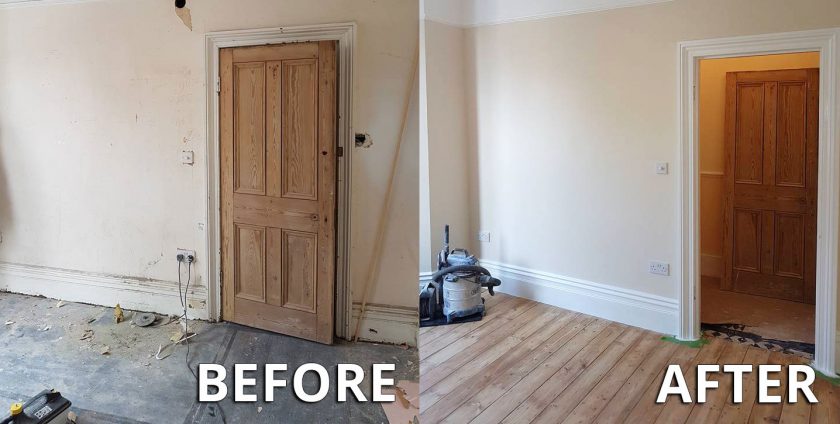
Are you bored with the look of the room? Are you tired of the colors of the walls? Painting is a great way to quickly change the look of any interior. And it is not difficult at all! Here are some tips and tricks on what to look for to renew walls and ceilings and enjoy great results.
1. What color do you want to choose?
Choose the color you want to paint the walls with. Remember that a small sample of the color in the pattern may not reflect how it will look over a larger surface. Therefore, before you buy paint, the shade you choose is worth checking out on a test paint. This is made possible by color testers in the form of 50 ml sachets, which allow you to paint 1 square meter of surface. By checking the shade on the wall in the interior, it is easier to assess whether it matches the arrangement and how it works in lighting the interior.
2. Choose the right tools
The right quality and type of painting tools are no less important than choosing the right paint. The tools should be adapted to the surface to be painted and the structure you want to achieve.
When painting large surfaces such as walls and ceilings, paint rollers work best. If you have a smooth finish on the walls and ceilings, you can choose rollers with short pile. It will provide a smooth, very elegant finish to the painted surface.
For rough surfaces, longer-pile shafts will work better. For small surfaces, e.g. door frames, it is best to use paint brushes or small rollers. The most universal are brushes with mixed bristles (synthetic – natural), which can be used for both waterborne and solvent based paints.
3. Clean the walls and secure before painting
Before painting, it is advisable to carefully protect the surfaces of windows, radiators, floors and other elements in the room that could be contaminated with paint. For this purpose, use tape and paint film. Elements of equipment, such as socket outlets, contacts, etc. are best dismantled, and the remaining parts should be protected against soiling with foil and masking tape. Before painting new substrates, they must also be degreased, dedusted, any defects should be leveled and leveled. In the case of renovation of old coatings, remove all poorly adhering coatings of old paint, fill out irregularities and defects, and remove irregularities. The walls can also be matted with fine-grained sandpaper before painting and then dusted off – this improves the adhesion of the new paint.
Do not forget to cover the floor or furniture with cardboard or foil, and plinths, strips and sockets should be covered with masking tape.
4. Priming the ceiling and walls
Priming the ceiling and walls should be started with painting the corners with a small paint roller. After priming the corners, prime the entire surface of the ceiling or walls with a large paint roller on an extension cord. Immediately after painting, peel off the painting tape carefully. Wall paint should be applied up and down so as to cover the entire height of the surface. Important: To avoid streaking, make the last move from top to bottom. Immediately after painting, peel off the painting tape carefully.
5. Painting the ceiling
Similarly to priming the ceiling, painting should be started from the corners using a small paint roller. Then, using a large roller with an extension cord, apply the first coat of paint in parallel to the largest light source in the room. Immediately after painting, peel off the painting tape carefully. Apply another coat of paint after about 4 hours, starting from painting the corners with a small roller. Then, using a large roller with an extension cord, apply a second coat of paint perpendicular to the largest light source in the room. The tape is best removed immediately after painting each of the subsequent layers, before a fresh layer of paint dries to the tape. To avoid tearing off the tape along with the paint, this should be done slowly and at an appropriate angle.
6. Painting the walls
In the first stage, paint the corners and all hard-to-reach places, using a small paint roller. Paint the remaining wall surface using a large paint roller on an extension cord, starting from the corner of the wall and moving left or right. Apply the paint with up-down movements so as to cover the entire height of the surface. Important: To avoid streaks, make the last move from top to bottom. Immediately after painting, peel off the painting tape carefully. In the first stage, paint the corners and all hard-to-reach places using a small paint roller – just like in the first layer. Paint the remaining wall surface using a large paint roller on an extension cord, starting from the corner of the wall and moving left or right. Apply the paint up and down in such a way as to cover the entire height of the surface. Important: To avoid streaks, make the last move from top to bottom. Immediately after painting, peel off the painting tape carefully.
7. If you are unsure, use MD Sash Windows services
We offer a wide range of renovation services for apartments, houses and office premises. We carry out repairs both inside (painting, filling, installing windows) and outside buildings (e.g. painting facades). If you are planning a renovation, please use our services. Contact us for more information.

